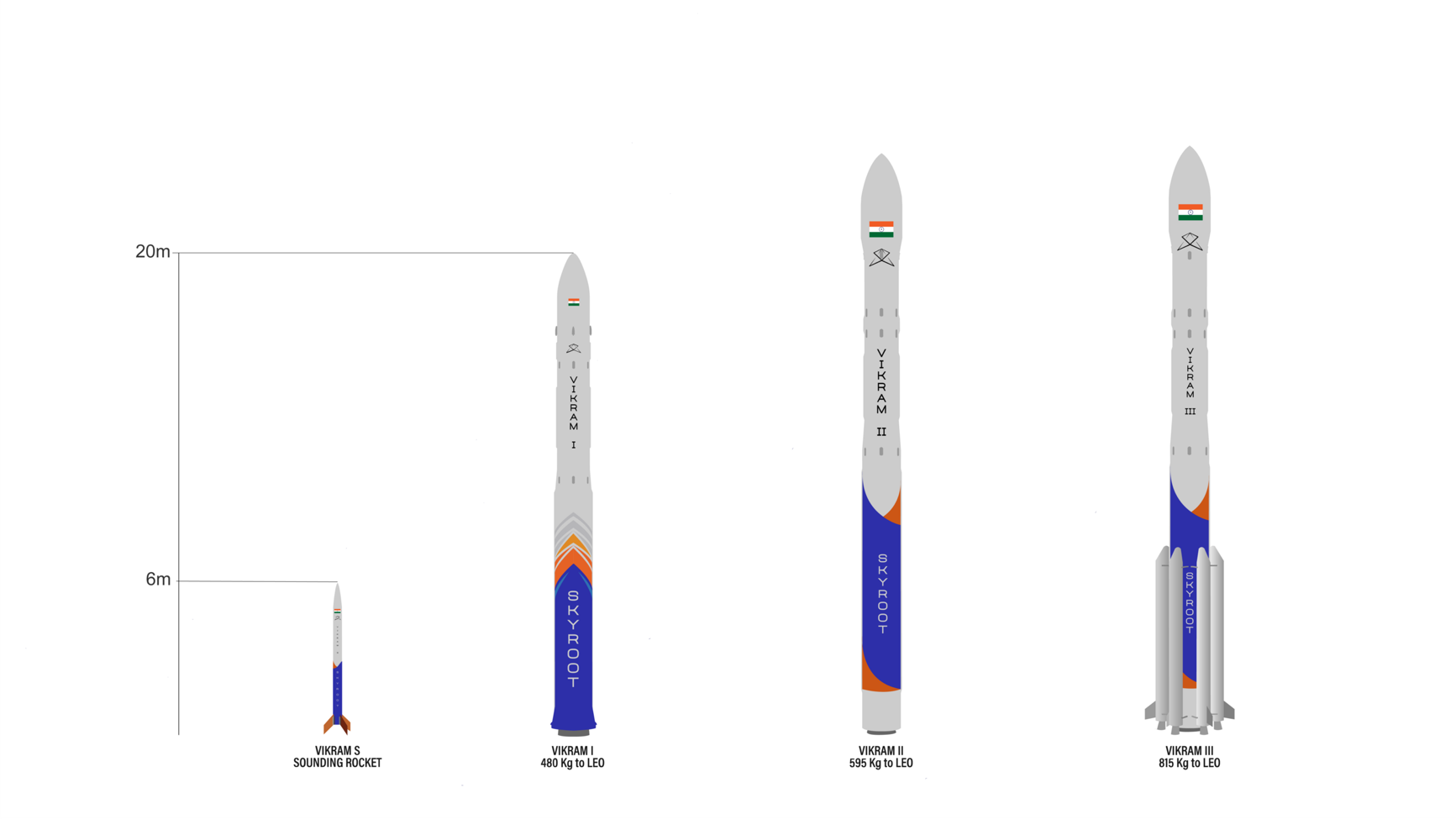Description

Disclaimer: Copyright infringement not intended.
Context
- The successful test firing of Stage-2, named Kalam-250, of the Vikram-1 space launch vehicle by Skyroot Aerospace represents a significant milestone in India's space industry.
Details
Technical Specifications
- Kalam-250 is a high-strength carbon composite rocket motor utilizing solid fuel.
- It incorporates a high-performance Ethylene-Propylene-Diene terpolymers (EPDM) Thermal Protection System (TPS).
- The stage-2 features a carbon ablative flex nozzle and high-precision electro-mechanical actuators for thrust vector control, ensuring precise trajectory adjustments.
- The solid propellant for Kalam-250 was processed by Solar Industries at their Nagpur facility.
Importance of Stage-2
- Stage-2 plays a critical role in the ascent of the launch vehicle, propelling it from the atmospheric phase to the deep vacuum of outer space.
- It is a pivotal component in achieving the desired trajectory for the launch vehicle.

Significance of the achievement
- This achievement marks a significant milestone for the Indian space industry, representing the successful test of the largest propulsion system ever designed and manufactured by the Indian private sector.
- It also signifies the first carbon-composite-built motor tested at ISRO, showcasing advancements in materials and manufacturing techniques.
- The successful test firing brings Skyroot Aerospace another step closer to the upcoming orbital launch of the Vikram-1 rocket.
Future Plans
- Skyroot Aerospace aims to continue progressing towards the maiden orbital launch of the Vikram-1 in 2024.
- The company remains focused on achieving further milestones in the coming months, with the support of IN-SPACe and ISRO.
Vikram family
Overview:
- The Vikram family comprises small-lift launch vehicles aimed at providing access to space for various payloads.
- The series includes Vikram I, II, and III, with differing payload capacities and capabilities.
- The inaugural mission, Prarambh, involved a suborbital flight designated "Vikram-S" and was conducted on 18 November 2022.
Vikram I:
- Vikram I, the first rocket in the series, features three solid-fuel-powered stages and a final stage equipped with Raman engines.
- The Raman engines, powered by MMH and NTO liquid fuels, are utilized for final orbit adjustments.
- Vikram I is designed to lift payloads of up to 290 kg to a 500 km Sun synchronous polar orbit (SSPO) or 480 kg to a 500 km low Earth orbit (LEO) with a 45º inclination.

Development and Testing:
- Skyroot Aerospace has conducted a series of tests and milestones to develop and validate various components of the Vikram series:
- Successful testing of the upper stage engine "Raman" on Vikram 1 launch vehicle.
- Firing of Ballistic Evaluation Motors (BEM) to refine and qualify solid stage propellant formulation.
- Test firing of a solid rocket stage demonstrator named 'Kalam-5'.
- Proof Pressure Test (PPT) completion for Vikram 1's third stage ('Kalam-100').
- Full duration test-firing of the 'Vikram-1' rocket stage ('Kalam-100'), marking a significant milestone.
- Maiden launch of Vikram-S suborbital rocket, reaching an apogee of 89.5 km and making Skyroot Aerospace the first Indian private company to reach space.
- Successful fire-endurance test of the fully 3D-printed 'Dhawan-II' Cryogenic engine for Vikram-2's upper stage.
- Flight qualification testing of the Raman-I engine for roll attitude control of Vikram-I rocket.
- Carbon-fiber winding and curing of Stage-1 motor case ('Kalam 1200') for Vikram-I.
- Successful qualification test firing of igniter for Vikram-1 Stage-2 ('Kalam-250').
- Proof pressure test on Kalam-1200, the first stage of Vikram-1 rocket.
|
PRACTICE QUESTION
Q. Vikram series represents a significant advancement in India's indigenous space launch capabilities, with a focus on reliability, affordability, and accessibility for small payloads. Discuss. (150 Words)
|
















